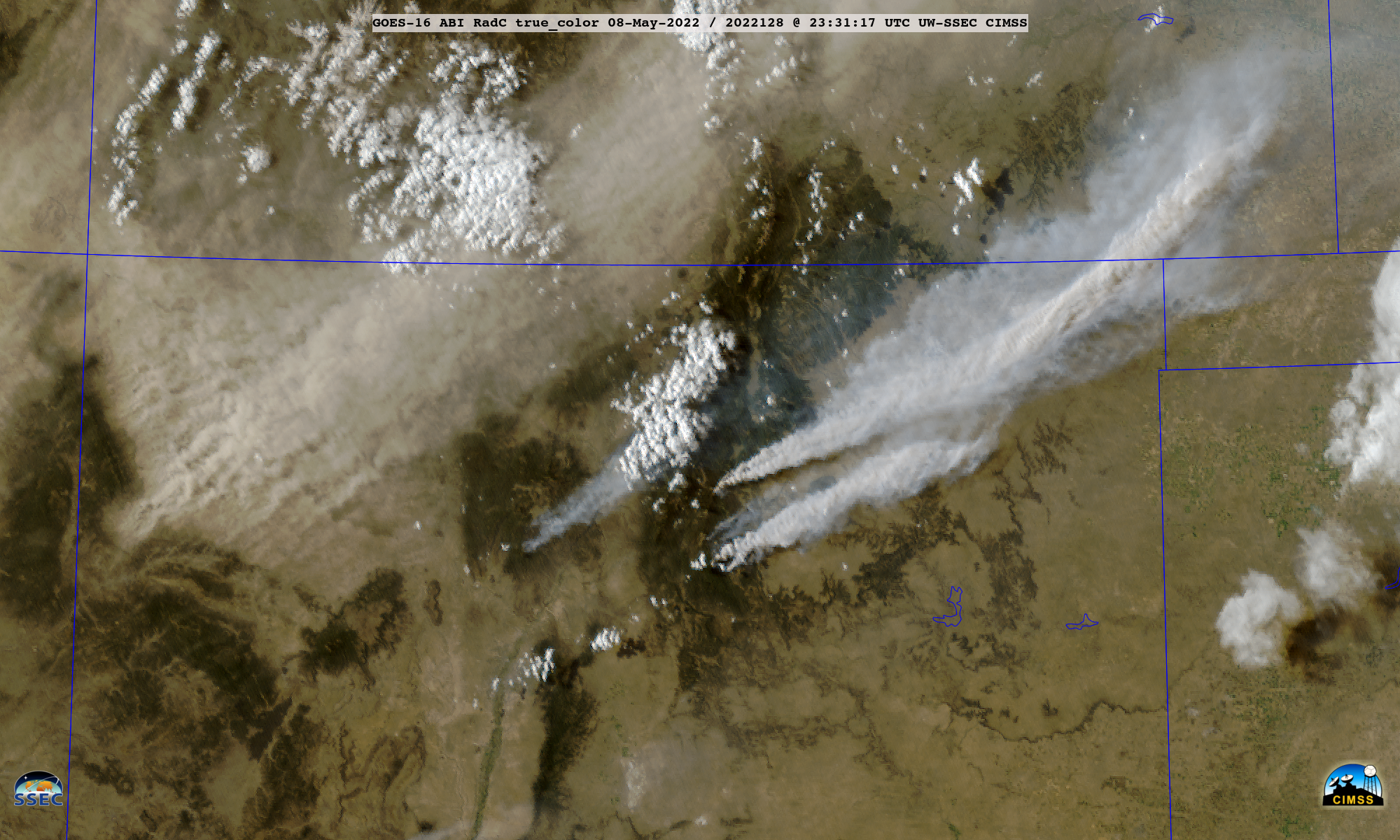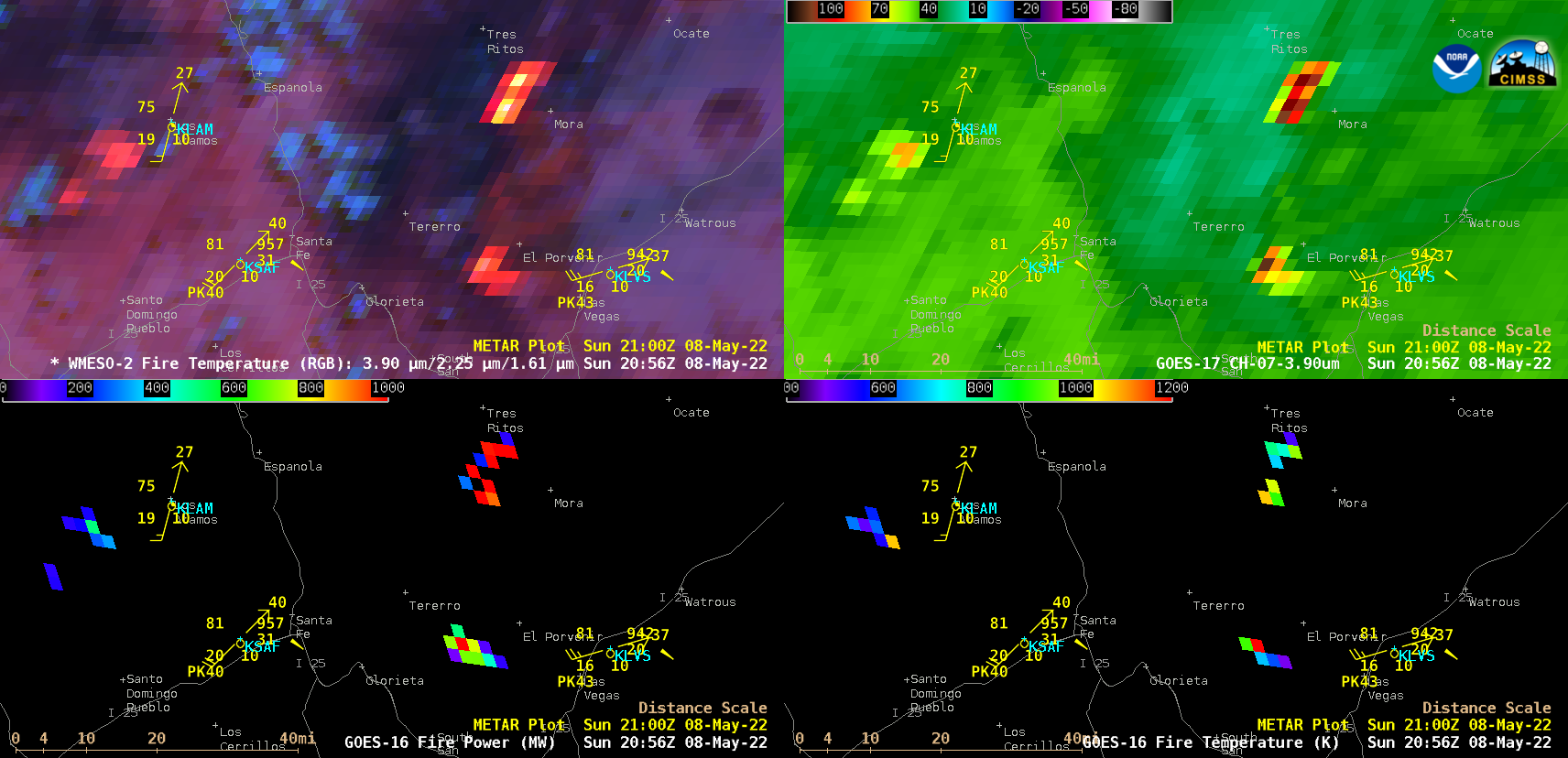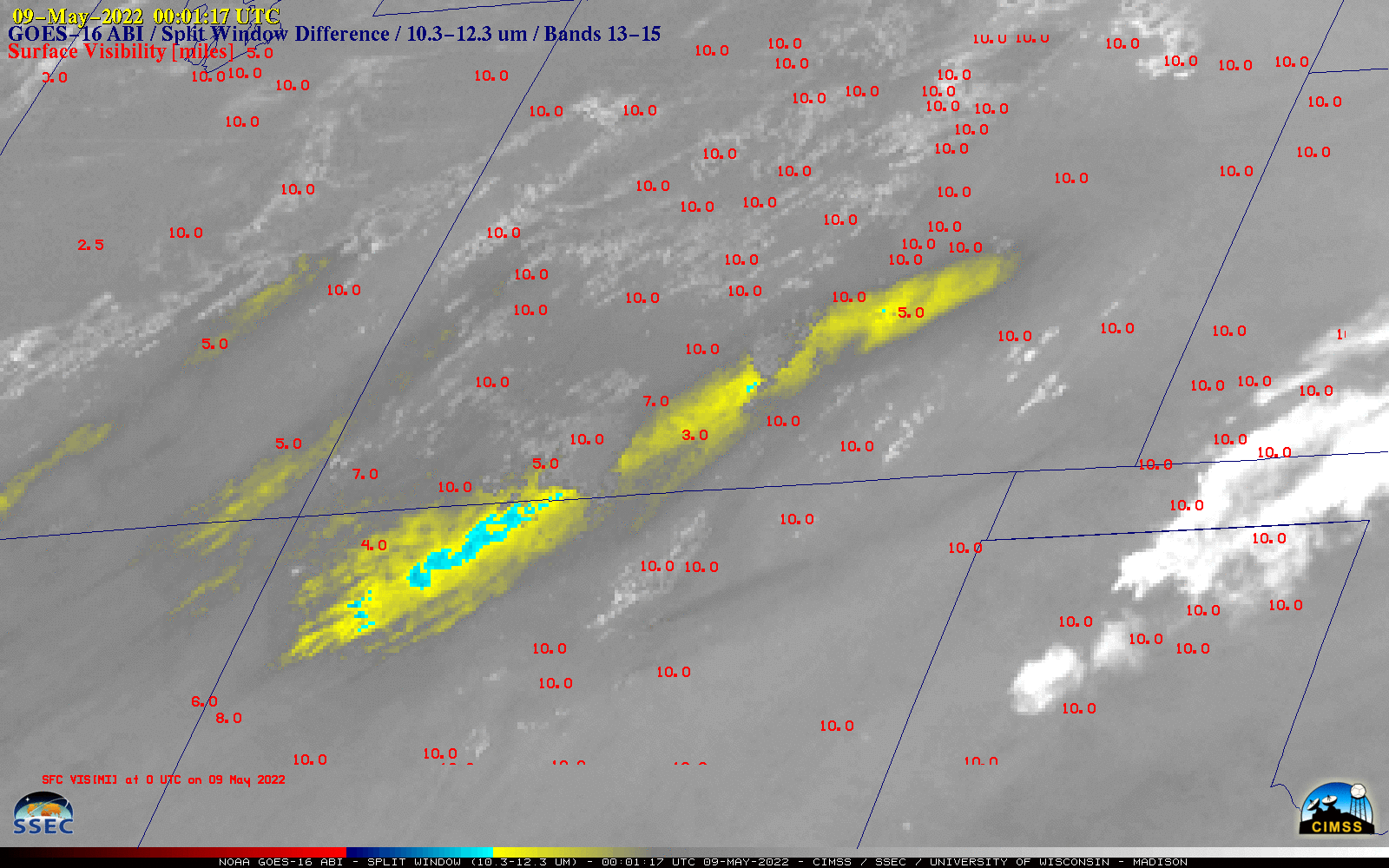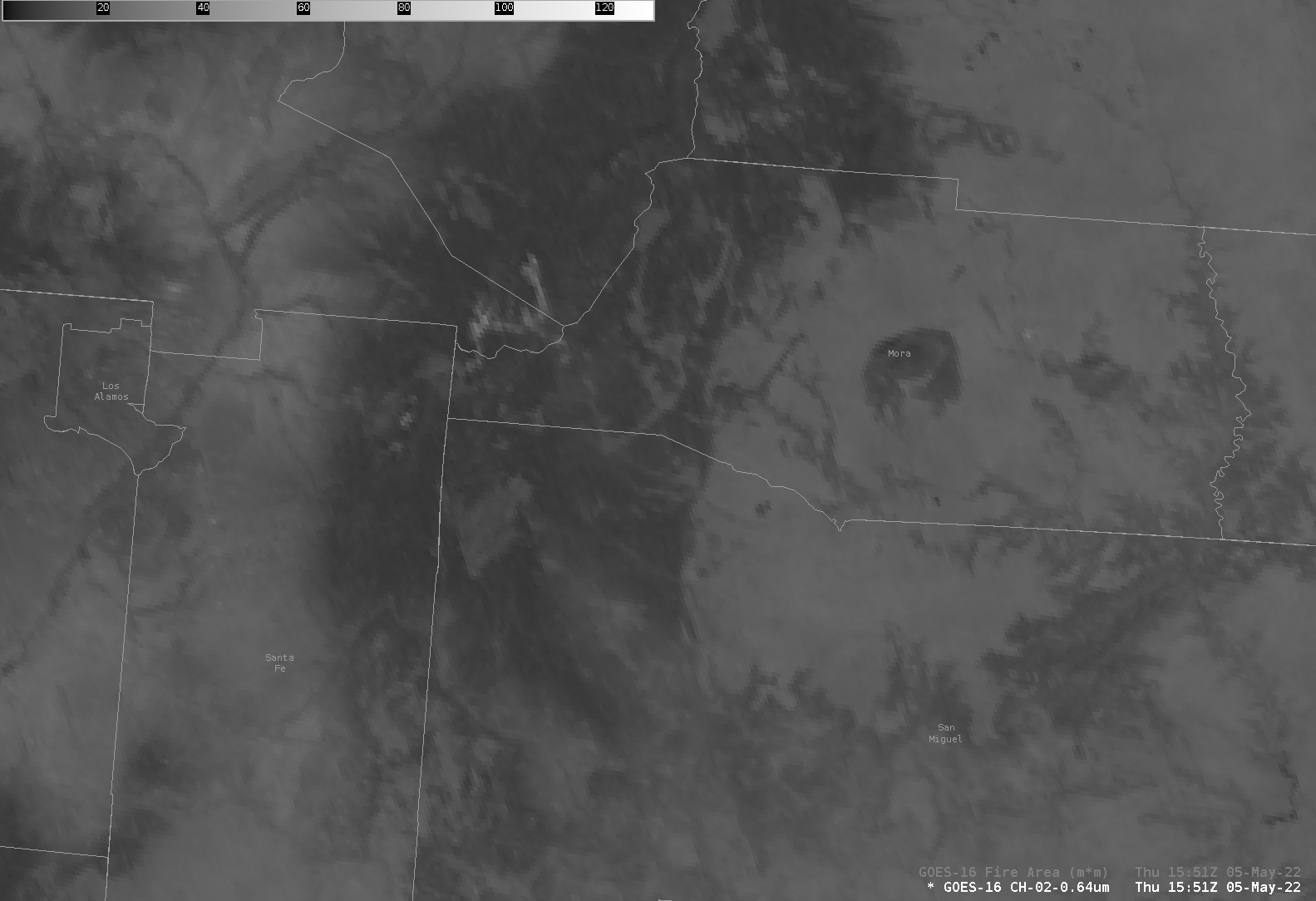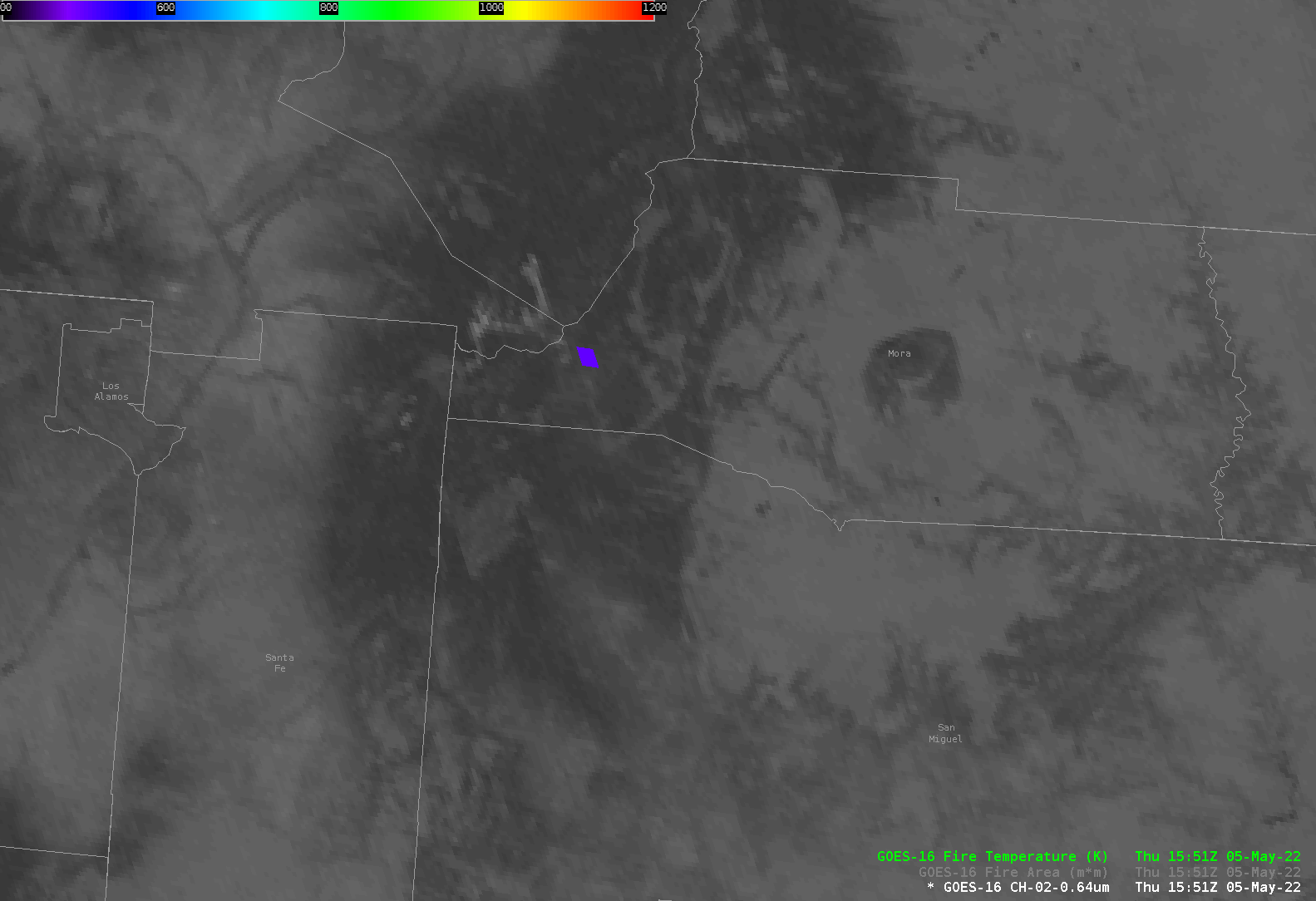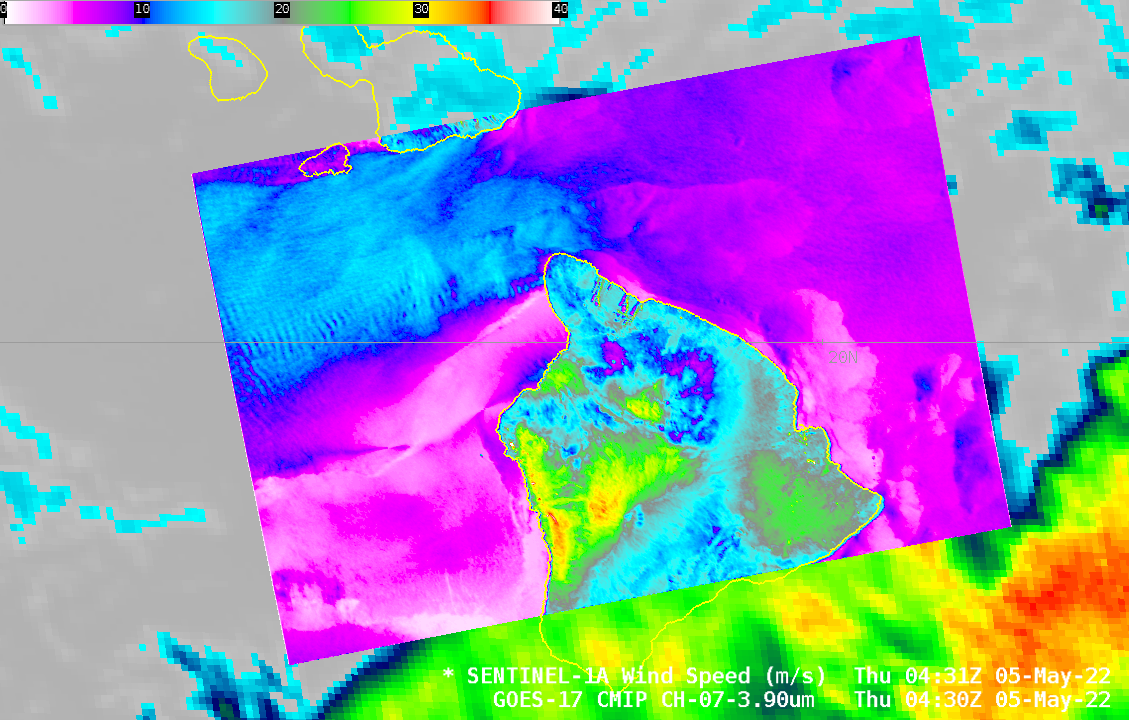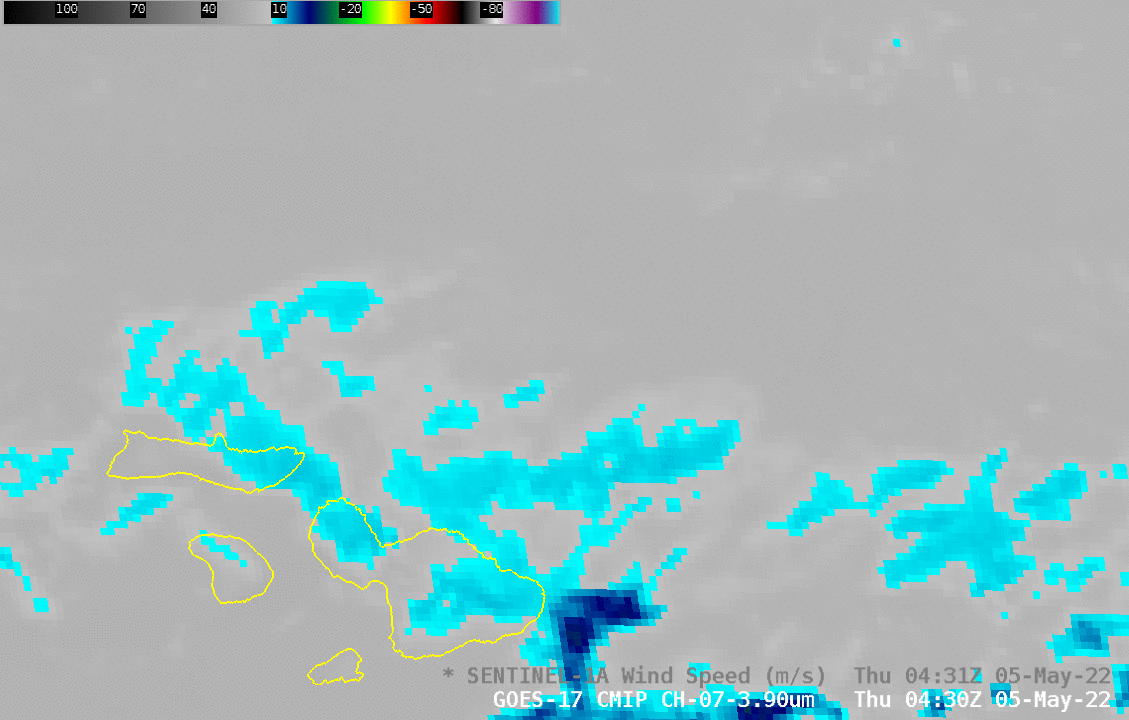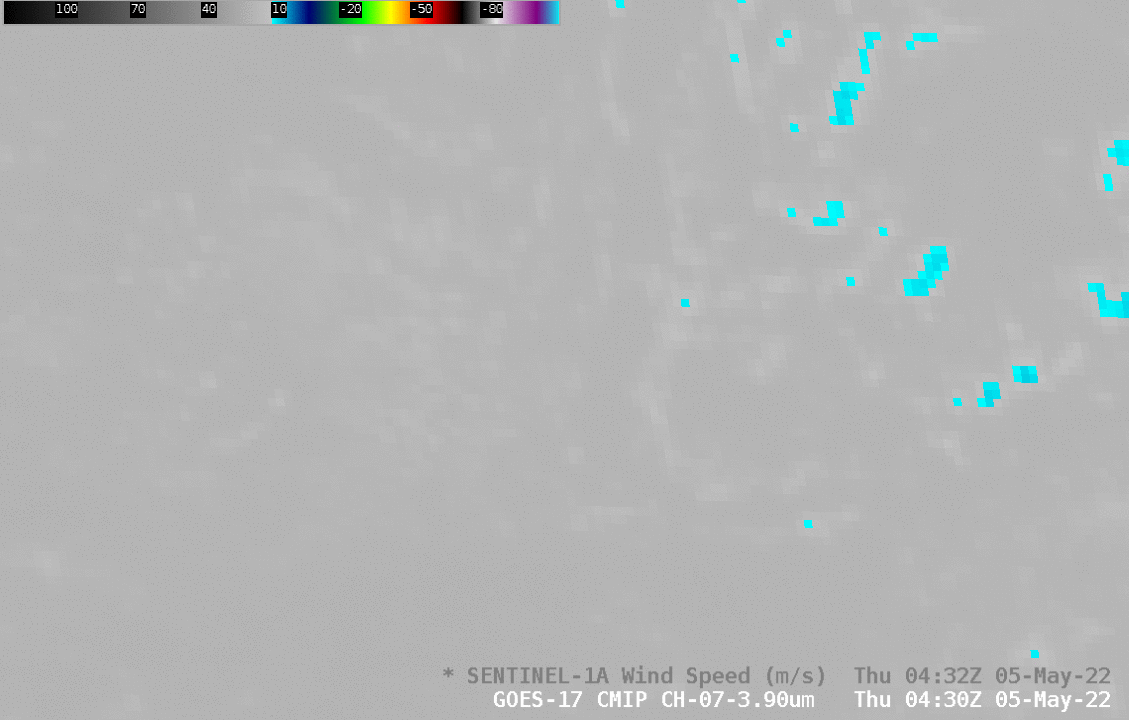
Here’s a text received late on 8 May from a kid: “Hail today in Portland”. The animation above shows GOES-17 Visible (0.64 µm) imagery between 2201 UTC on 8 May and 0311 UTC on 9 May. The follow-up text answering the obvious question (What time?) was “Around 5 PM” — that is, around 0000 UTC on 9 May. Infrared imagery (Band 13, 10.3 µm) from GOES-17 over the same time period — 2201 – 0311 UTC — is shown below. This loop uses a default enhancement from AWIPS (which enhancement has as its coolest temperature -109oC, perhaps too cold for this airmass; click here to see an animation with a coolest temperature of -90oC; variability in the cold cloud tops is much easier to visualize in that modified color enhancement).

The slower animation below, between 0000 UTC and 0100 UTC, highlights the cold cloud tops (west of Portand) of the system that might have produced hail. The eye is drawn to the developing cold cloud tops with the tweaked (non-default) enhancement. (By this time, having examined the imagery, I wonder about the report of the hail occurring around 5 PM; This event was also mentioned on the NWS Portland Facebook page).

LightningCast Probability is a product in the NOAA/CIMSS ProbSevere portfolio that predicts the likelihood of a GLM Flash Event based on a single time of the GOES-17 bands that are used in the Day Cloud Phase Distinction RGB: Bands 2 (0.64 µm), 5 (1.61 µm) and 13 (10.3 µm). The animation of that field is shown below. Contours denote probabilities of 10% (dark blue), 25% (cyan), 50% (green) and 75% (magenta). One lightning flash is shown at the of the animation; note however how the probability contours center on the strongest developing convective cell early in its lifecyle — even though it never produced lightning as detected by the GOES-17 GLM.

NOAA-20 overflew the Pacific Northwest in the afternoon, with two passes over Oregon, as shown in the toggle below that also shows gridded 850-500 mb NUCAPS Lapse Rates at 1933 and 2113 UTC on 8 May. Even though the westernmost NOAA-20 has truncated data, very steep lapse rates — near 8o C/km — are evident.
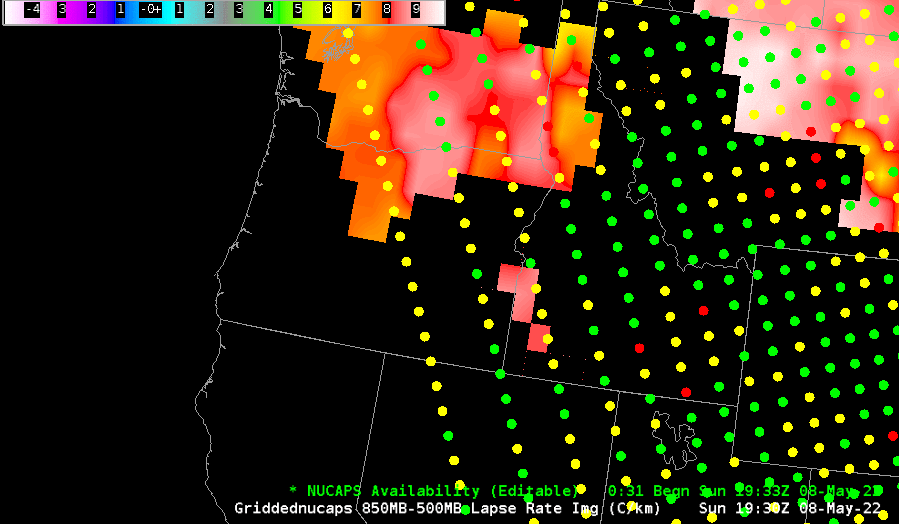
500-mb temperatures are shown below, with Portland deep within the cold air (500-mb temperatures are at/below -30o C!). The gridded fields look smooth despite the abundance of yellow and red points in the NUCAPS fields, designating regions where the infrared retrieval did not converge (yellow) or where the infrared and microwave retrievals both failed! This example shows that profiles that do not converge because of low-level clouds/moisture/rain may nevertheless produce useful upper-air information. The 2113 UTC 500-mb temperature field here, shows a red profile in the Willamette Valley in the northernmost row of profiles, and a green profile in the same row just west of the Oregon Coast. The toggle of profiles at those two points is shown below; both have useful information around 500 mb (and above) even though near-surface values in the red profile are of dubious value. Note the steep lower-tropospheric lapse rates in the sounding that is just offshore!
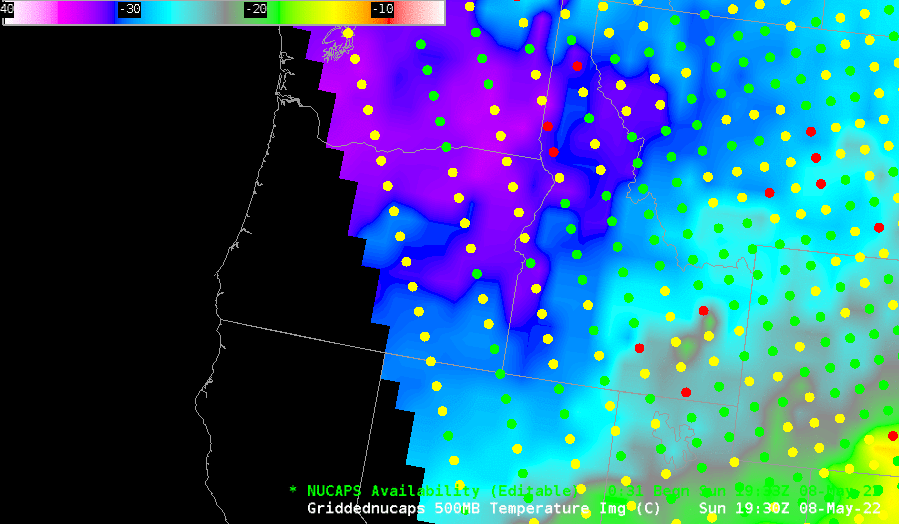
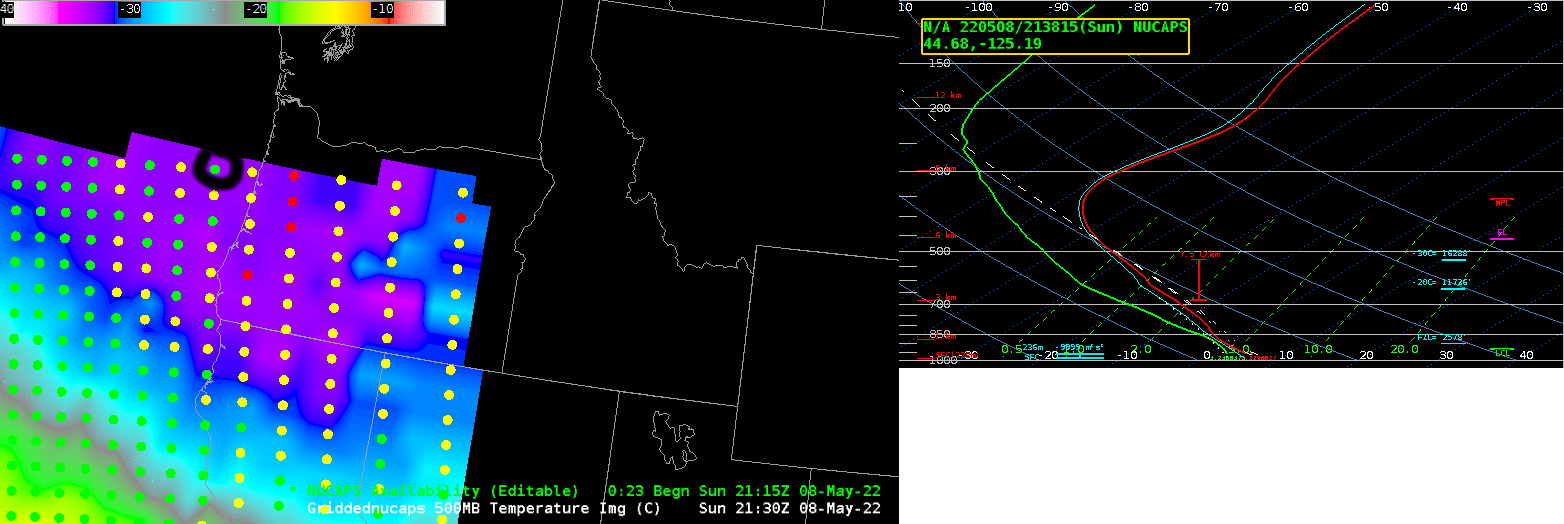
NUCAPS imagery was created with the NOAA/TOWR-S AWIPS Cloud instance. Thank you!
View only this post Read Less


